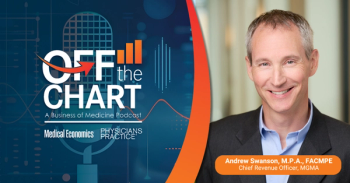
Office-Based Physicians Giving Employment a Shot in the Arm
Perhaps the folks in Washington, D.C., looking for a solution to the jobs crisis should look to an industry they've been focusing on changing for the last decade: healthcare. More specifically, they might want to look at office-based physician practices, which supported four million jobs in 2009, according to new AMA data.
Perhaps the folks in Washington, D.C., looking for a solution to the jobs crisis should look to an industry they've been focusing on changing for the last decade: healthcare. More specifically, they might want to look at office-based physician practices, which supported four million jobs in 2009, according to new AMA data.
The national doctor's association has released a new
Here are some of the quick takeaways:
• State-level "total output," or the amount contributed to the economy, was $1.4 trillion in 2009, or the equivalent of 28 million people making $50,000/annually.
• Looking at the impact of staffing of private practices, including front-desk, billing, non-physician providers and others, practices in the median state supported over 46,400 jobs per state. On average, according to the data, each office-based physician supported 6.2 jobs across the nation, including his own.
• The contribution of private practices to their communities is significant - to the tune of $833 billion in wages and benefits across the industry. Furthermore, on average, each office-based physician supported $1.3 million in wages and benefits nationwide.
• Let's not forget the taxes paid by these offices - physicians' offices nationwide supported $63 billion in total state and local tax revenues in 2009; that's $100,000 per physician on average.
"Although physicians are primarily focused on providing excellent patient care, physician offices and the jobs and revenue they produce are significant contributors to national and state economies," said AMA President Cecil B. Wilson in a statement. "This study illustrates that office-based physicians contribute to both the general health of their patients and also to the economic health of their communities."
The report, and the AMA's Economic Impact Study
Perhaps not surprisingly, California has the lead in number of physicians (78,393); economic output ($137.9 billion); jobs (458,397); wages and benefits ($106.3 billion); and taxes ($7.2 billion in state and local tax revenue). New York, Florida, and Texas are also leaders due to their size.
And while Wyoming only has 896 attributed physicians, according to the data, it still provides $1 billion in economic output, nearly 5,000 jobs, and $28.3 million in tax revenues.
So even the smallest physician populations are not only contributing to the health of their citizens, but the health of their local economies as well.
The report, does not, however, discuss the possible impact of the Affordable Care Act, including initiatives including accountable care organizations (ACOs) or medical homes, which some see as spelling the end of smaller office-based physician offices. Perhaps the AMA's 2016 economic impact analysis will present a different outcome in how much private practice contributes to jobs and the local economy when many of them may be gone.
Newsletter
Optimize your practice with the Physicians Practice newsletter, offering management pearls, leadership tips, and business strategies tailored for practice administrators and physicians of any specialty.










